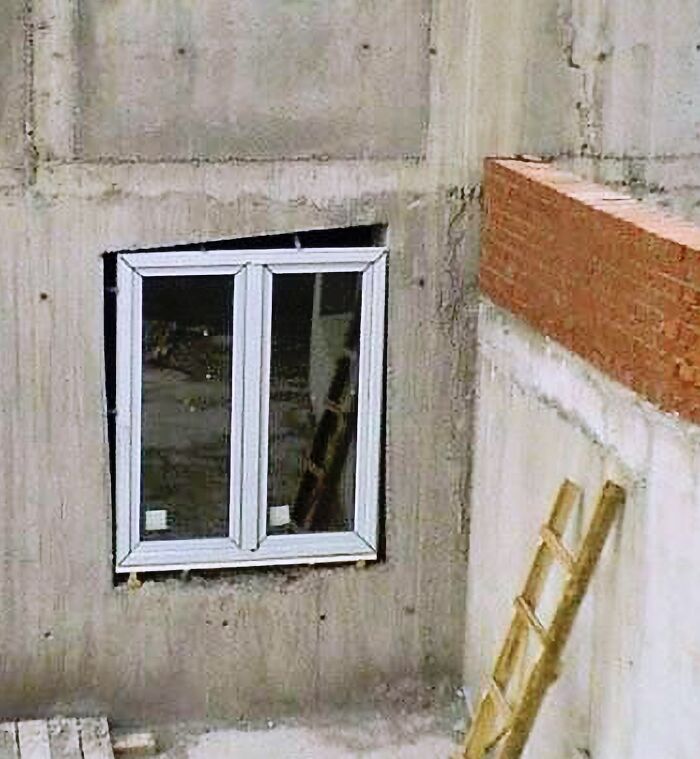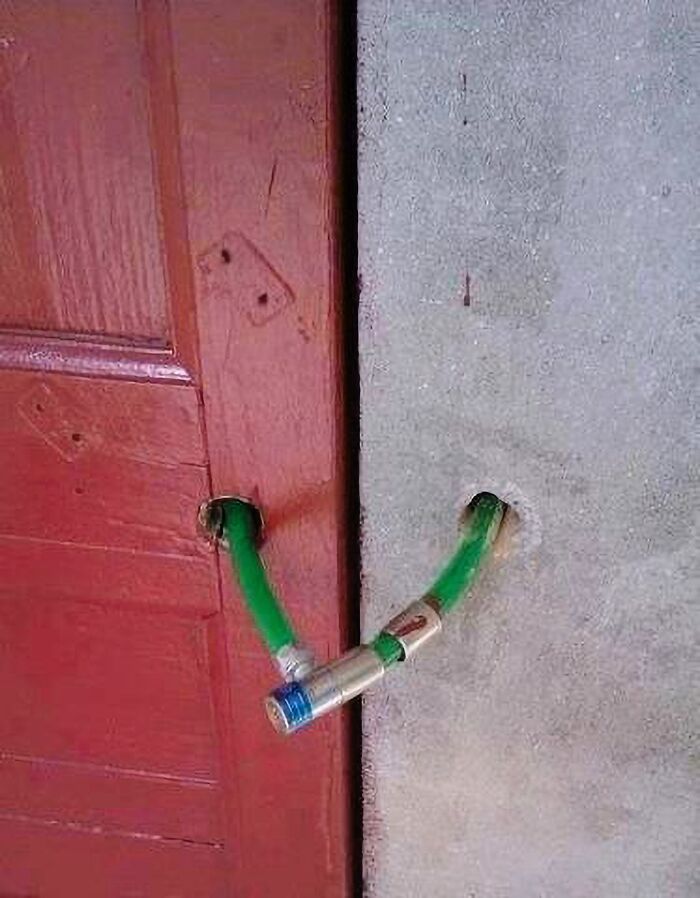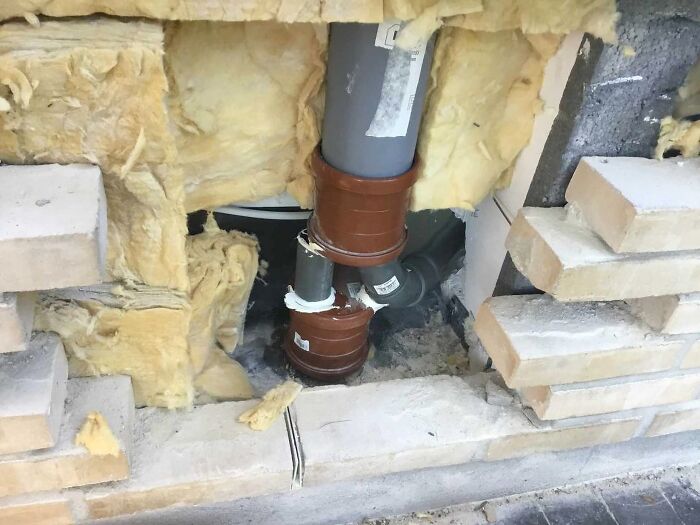
“Another Satisfied Client”: 30 Funny Times People Didn’t Even Try To Do Their Job Right
Architecture and its design have evolved significantly over the years, effortlessly blending speed, functionality, cost-efficiency, safety, and aesthetics. Probably the most impressive of all is the rate at which we can build constructions. On average, it takes between 7 and 12 months to build a single-family home and 28 to complete a skyscraper. This seems like the speed of lightning compared to the past, when buildings would take from several years to centuries to make.
But faster doesn’t always mean better. Rushed construction can result in poor quality, precision, and craftsmanship, leading to long-term problems like leaks, structural oddities, and stairs that lead nowhere. These and so many more examples of architectural fails await you in the list below, courtesy of the Facebook pages Dream Rock Studio and Replumb. Scroll away to find some of the most offensive design misunderstandings there are, and don’t forget to share your thoughts—we'd love to know what you think.
This post may include affiliate links.
This should be way higher. Many of the others are kludges that solve a weird problem, but this is just total incompetence.
Not to be rude, but it can't get much higher, as it's already at 1.
Load More Replies...I had a door installed by Lowe's. This one pictured is still done better.
Why did they spray foam between bricks but couldn't be bothered to use mortar, were they just using what they had on hand? They didn't even try to lay as a course or arch.
Looks like something I'd do 😅, and I have 2 degrees. On the other hand...don't think most masons would be able to build a saas platform on a HA cluster. Guess there are a lot of stupid people in the world
Load More Replies...Expanding foam used on exterior surfaces will degrade due to moisture and UV rays. Not a good idea.
What allows modern-day constructions to be built in almost a blink of an eye is prefabrication. In this construction approach, the building starts not at the construction site but at the manufacturing factory, where various parts of the building are assembled.
This technique saves time and costs by producing and connecting components in a more suitable location that cuts out most of the transportation time and costs.
Often, job sites are located in cramped and dense cities or distant rural areas, making it more challenging to deliver materials and heavy-duty machinery. This can often be problematic, lengthening construction timeliness and automatically raising costs.
Not only does prefabrication eliminate these issues, but it also abolishes any weather constraints or schedule delays and allows companies to take on multiple projects without limiting their focus, time, and resources on a single construction.
Prefabricated buildings, or in short, prefab, can save up to 50% of the time compared to traditional construction. This is great news for investors, as they get to reap their profits much faster.
I have never seen this in real life, but I have dreamed abut it on occasion.
The appeal is definitely there, making this construction technique receive more and more attention. Experts predict that it will reach a 6.1% increase by 2028. Prefabrication is already a big trend in the building industry, with 84% of detached homes in Sweden being supplemented with prefab elements. Third-world countries are also shifting their focus to this technique to meet their money and housing shortages.
To get a better idea of just how speedy construction can get, we’re looking at some of the fastest buildings ever built. The Guinness World Record for the swiftest home ever built belongs to a house completed in 3 hours, 26 minutes, and 34 seconds in Shelby County, Alabama. It covered 1,200 square feet and had three bedrooms and two bathrooms, all equipped with electricity and plumbing. It was a result of a charity project in 2002 and beat New Zealand’s record of 3 hours, 44 minutes, and 59 seconds.
In second place are one-day Heijmans houses that can be assembled in, you guessed it, 24 hours. It was the concept of a Dutch construction company that tried to address the housing shortage and offer rental lodging for young professionals. The home fits a living room, dining room, a bathroom, a bedroom, and a kitchen. It has panels for energy and electricity and can be easily transported and installed anywhere with little environmental impact.
House converted into a duplex. I lived in one once and had stairs to nowhere in a closet.
The third building took 48 hours and was constructed in India using prefabricated parts that were assembled on-site. Called Instacon Tower, it’s a 10-story commercial building, accommodating up to 600 people. In 2012, it became the fastest-built construction in India.
Goggled the brand name on the bottle. Volvic is a mineral water brand from France.
In the same year, a 30-story hotel sprouted in China in just 360 hours (15 days). It was developed by Broad Sustainable Building (BSB), which again used prefabricated pieces to build the construction. The combined floor surface comes to 183,000 square feet and can even withstand a magnitude nine earthquake.
That would be fun for a toddler or kids though 😂 37 yr old me is already excited by it for no reason
The last fastest construction was also built in China but this time in 19 days. It was a 57-story skyscraper called Mini Sky City assembled by the same previously mentioned BSB company. The total height came to 656 feet and it fits 800 apartments and office spaces for 4,000 people. Completed in 2015, it broke the record for the fastest-constructed skyscraper ever.
All it needs is a sign that says Fire Exit and it would be perfect.
Translated it to English if you're curious. "You can do that but then it's just c**p"
Best collection ever. I'm used to collections of "design fails" where the failure can be justified on some level, lack of space, mid construction, short on time and money, etc. But these look like deliberate hate mail!
Mostly retrofits in old buildings, not construction fails. Needs change, and sometime one has to abandon unused stairways or work plumbing around obstacles. Not an issue as long as the result is functional.
Best collection ever. I'm used to collections of "design fails" where the failure can be justified on some level, lack of space, mid construction, short on time and money, etc. But these look like deliberate hate mail!
Mostly retrofits in old buildings, not construction fails. Needs change, and sometime one has to abandon unused stairways or work plumbing around obstacles. Not an issue as long as the result is functional.

 Dark Mode
Dark Mode 

 No fees, cancel anytime
No fees, cancel anytime 


















































































































































